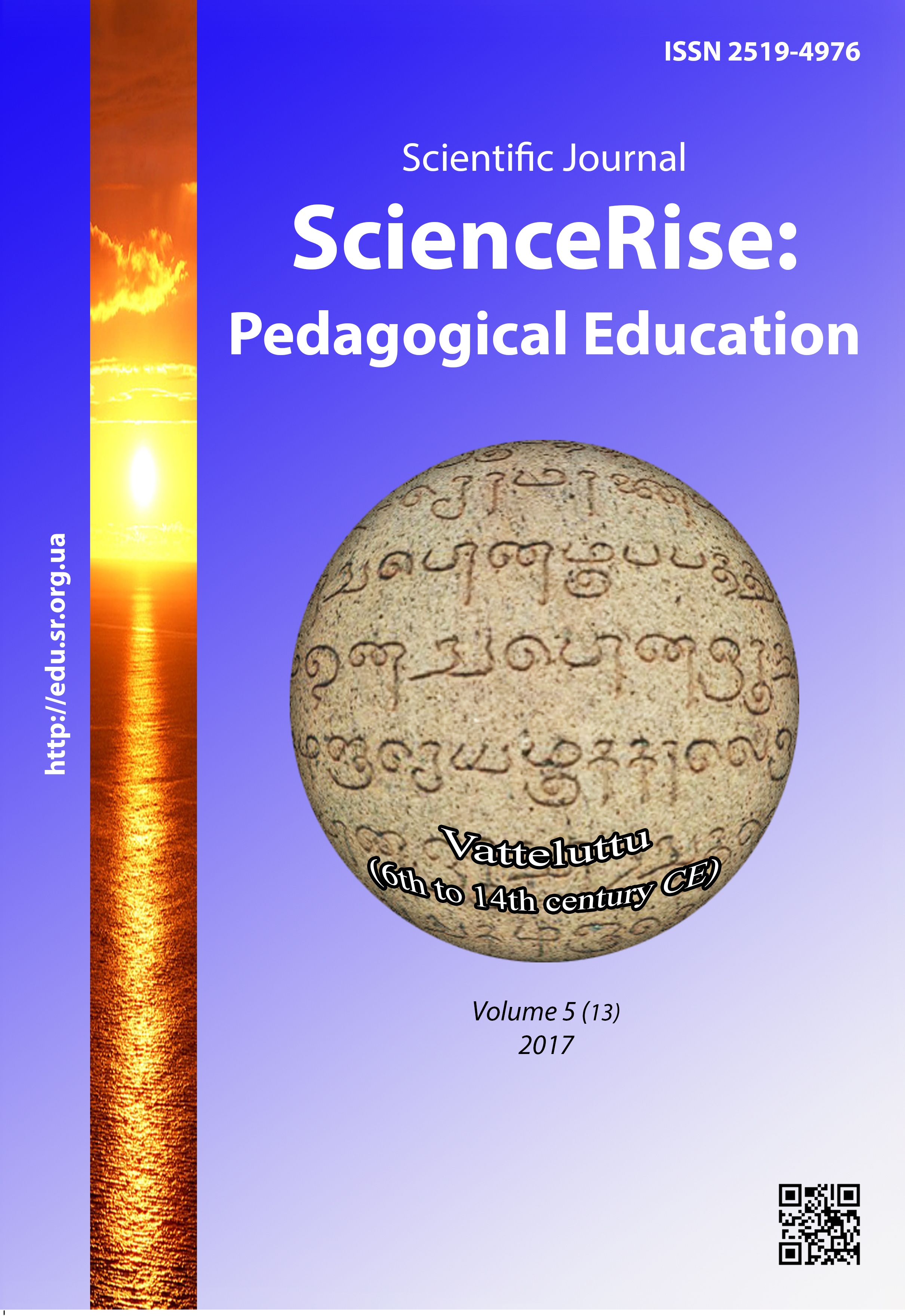Modeling of interpersonal interaction in the system of postgraduate education
DOI:
https://doi.org/10.15587/2519-4984.2017.102811Keywords:
модель, моделювання. інтерперсональна взаємодія, система післядипломної освіти, слухач, діадаAbstract
In the article were grounded the features of interpersonal interaction modeling in the system of postgraduate education based on the definition of the notions “interpersonal interaction”, “modeling”, “social interaction”. The specificity of pedagogical thinking was explained; the succession of stages of pedagogical processes and phenomena model elaboration was presented. There was formulated the conclusion that interpersonal interaction in the system of higher and postgraduate education is mainly an interaction in the dyad “student ↔teacher” that is the organization of these students’ common activity for attaining the common aim. The modeling of interpersonal interaction in the system of postgraduate education is presented on the base of the analysis of different classifications of interpersonal interaction in pedagogical and psychological science. There were analyzed the types of interpersonal communication in the system of postgraduate education – dyad (that appear at direct communication), individual-group (realized in interaction with students’ group), group (as an interaction between students’ and teachers’ collective), one- or two-side (as dialog/monolog type of interaction). There was grounded the content of internal and external models of interpersonal communication of educational process subjects in institutes (centers) of postgraduate education
Keywords: model, modeling, interpersonal interaction, postgraduate education system, student, dyad
References
- Arnol'd, V. I. (2004). «Zhyostkie» i «myagkie» matematicheskie modeli. Moscow: MCNMO, 32.
- Hnezdilova, K. M., Kasyarum, S. O. (2011). Modeli ta modelyuvannya u profesiyniy diyal'nosti vykladacha vyshchoyi shkoly. Cherkasy: Vydavets' Chabanenko Yu. A., 124.
- Honcharenko, S. U. (2008). Pedahohichni doslidzhennya. Metodolohichni porady molodym naukovtsyam. Kyyiv-Vinnytsya: DOV «Vinnytsya», 278.
- Matushinskiy, G. U., Frolov, A. G. (2000). Proektirovanie modeley podgotovki k professional'noy deyatel'nosti prepodavateley vysshey shkoly. Educational Technology and Soсiety, 3 (4), 183–192.
- Pikel'naya, V. S. (1993). Teoriya i metodika modelirovaniya upravlencheskoy deyatel'nosti (shkolovedcheskiy aspekt). Krivoy Rog, 374.
- Shehnnon, R. (1978). Imitacionnoe modelirovanie sistem – iskusstvo i nauka. Moscow: Mir, 418.
- Hukovs'ka, T. H. (2008). Osnovni metodolohichni pidkhody do modelyuvannya protsesu formuvannya emotsiyno-pochuttyevoyi sfery studentiv humanitarnykh spetsial'nostey. Dukhovnist' osobystosti: metodolohiya, teoriya i praktyka, 2 (25), 66–73.
- Dahin, A. N. (2004). Pedagogicheskoe modelirovanie kak sredstvo modernizacii obrazovaniya v otkrytom informacionnom soobshchestve. Standarty i monitoring v obrazovanii, 4, 46–60.
- Lodatko, Ye. O. (2007). Modelyuvannya osvitnikh system v konteksti tsinnisnoyi oriyentatsiyi sotsiokul'turnoho prostoru. Visnyk Cherkas'koho universytetu. Seriya: Pedahohichni nauky, 112, 32–40.
- Miheev, V. I. (2006). Modelirovanie i metody teorii izmereniy v pedagogike. Moscow: KomKniga, 200.
- Ponomarev, A. S. (2006). Model' specialista kak istochnik vybora i obosnovaniya soderzhaniya professional'nogo obrazovaniya. Kharkiv: NTU «KhPI», 58.
- Yakubovskiy, M. A. (2004). Matematicheskoe modelirovanie professional'noy deyatel'nosti uchitelya s ispol'zovaniem teorii nechetkih mnozhestv. Pedagogika i psihologiya, 3, 53–61.
- Park, R. (2002). Gorod kak social'naya laboratoriya. Sociologicheskoe obozrenie, 2 (3), 2.
- Tatenko, V. A. (1996). Psihologiya v sub"ektnom izmerenii. Kyiv: Prosvіta, 404.
- Vasyutynsky, V. (2005). Interpersonal interaction in the theories of the contemporar ukrainian psychiatrists. Sotsiohumanitarni problemy lyudyny, 1, 101–105. Available at: http://znc.com.ua/ukr/publ/periodic/shpp/2005/1/p101.php
- Tytarenko, T. M. (2003). Zhyttyevyy svit osobystosti: u mezhakh i za mezhamy budennosti. Kyiv: Lybid', 373.
Downloads
Published
How to Cite
Issue
Section
License
Copyright (c) 2017 Olena Kosyhina

This work is licensed under a Creative Commons Attribution 4.0 International License.
Our journal abides by the Creative Commons CC BY copyright rights and permissions for open access journals.
Authors, who are published in this journal, agree to the following conditions:
1. The authors reserve the right to authorship of the work and pass the first publication right of this work to the journal under the terms of a Creative Commons CC BY, which allows others to freely distribute the published research with the obligatory reference to the authors of the original work and the first publication of the work in this journal.
2. The authors have the right to conclude separate supplement agreements that relate to non-exclusive work distribution in the form in which it has been published by the journal (for example, to upload the work to the online storage of the journal or publish it as part of a monograph), provided that the reference to the first publication of the work in this journal is included.








